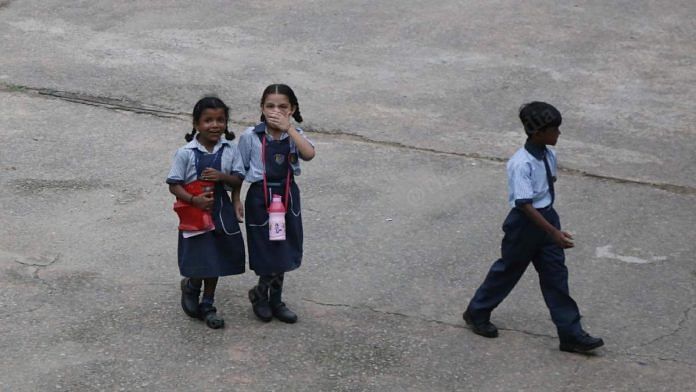Poor nutrition during a child’s school years may account for a 20cm height gap across nations, new research suggests.
The study, which was led by the UK’s Imperial College London and published in The Lancet, analyzed data on the height and weight of 65 million school-aged children and adolescents in 193 countries.
It found a 20cm difference between 19-year-olds in the tallest and shortest nations, representing an eight-year growth gap for girls, and a six-year growth gap for boys.
For example, the average 19-year-old girl in Bangladesh and Guatemala (the nations with the world’s shortest girls) is the same height as an average 11-year-old girl in the Netherlands (the nation with the tallest boys and girls).
Stunted growth
Highly variable childhood nutrition, especially a lack of quality food, may lead to stunted growth and a rise in childhood obesity – affecting a child’s health and wellbeing for their entire life, the authors believe.
“Our findings should motivate policies that increase the availability and reduce the cost of nutritious foods, as this will help children grow taller without gaining excessive weight for their height,” said Dr Andrea Rodriguez Martinez, the study’s lead author.
The study suggests initiatives such as food vouchers towards nutritious foods for low-income families, as well as free healthy school meal programmes – which are particularly under threat during the pandemic.
Global nutrition policies should also pay more attention to the growth patterns of older children, rather than focusing on under-fives, the authors said in their study.
Also read: How states are delivering mid-day meals to students during Covid-19 school closure
Nutrition crisis
Stunting, wasting and obesity caused by lack of nutrition or disease or both was analyzed in March by the World Health Organization (WHO), UNICEF and the World Bank Group.
Their joint malnutrition estimates found that in 2019, 47 million children under five were suffering from wasting – and 14.3 million were severely wasted. Wasting is a life-threatening form of malnutrition, which makes children too thin and weak, and puts them at greater risk of dying, poor growth, development and learning, according to UNICEF.
Coronavirus is heightening this nutrition crisis. In July, UNICEF warned that an additional 6.7 million children under five could suffer from wasting in 2020 due to COVID-19, 80% of them from sub-Saharan Africa and South Asia.
“Household poverty and food insecurity rates have increased. Essential nutrition services and supply chains have been disrupted. Food prices have soared. As a result, the quality of children’s diets has gone down and malnutrition rates will go up,” said Henrietta Fore, Executive Director at UNICEF.
At the peak of the pandemic, school closures around the world meant 370 million children missed out on free school meals, according to the World Food Programme, which is monitoring and mapping school closures. The current number is 260 million.
Global effort
For many children, those meals represented the only food they would have each day.
Guided by the World Food Programme and UNICEF, governments in 68 countries are providing take-home rations, vouchers or cash transfers to children – and working on health and nutrition incentives to encourage children to return to school once they reopen.
Still so much work to do…
To all the selfless volunteers, thank you. We have to keep fighting to stabilise the households of our children… https://t.co/QZYvKaMfJw
— Marcus Rashford MBE (@MarcusRashford) November 12, 2020
In the UK, Manchester United and England footballer Marcus Rashford has led a high-profile campaign to extend free school meals outside of term time to help feed impoverished children.
His campaign – based on his own experience of childhood poverty – resulted in the government reversing its decision and allowing about 1.3 million children in England to be able to claim free school meal vouchers in the summer holidays.
“We have to keep fighting to stabilize the households of our children,” Rashford said on Twitter.
Ending global hunger is the second of 17 Sustainable Development Goals (SDGs) adopted by the United Nations’ 193 member states in 2015. Goal 2 targets include ending all forms of malnutrition by 2030.
Victoria Masterson, Senior Writer, Formative Content
This article was previously published in the World Economic Forum.
Also read: Mid-day meal coverage sees a dip, govt says students are shifting to private schools



